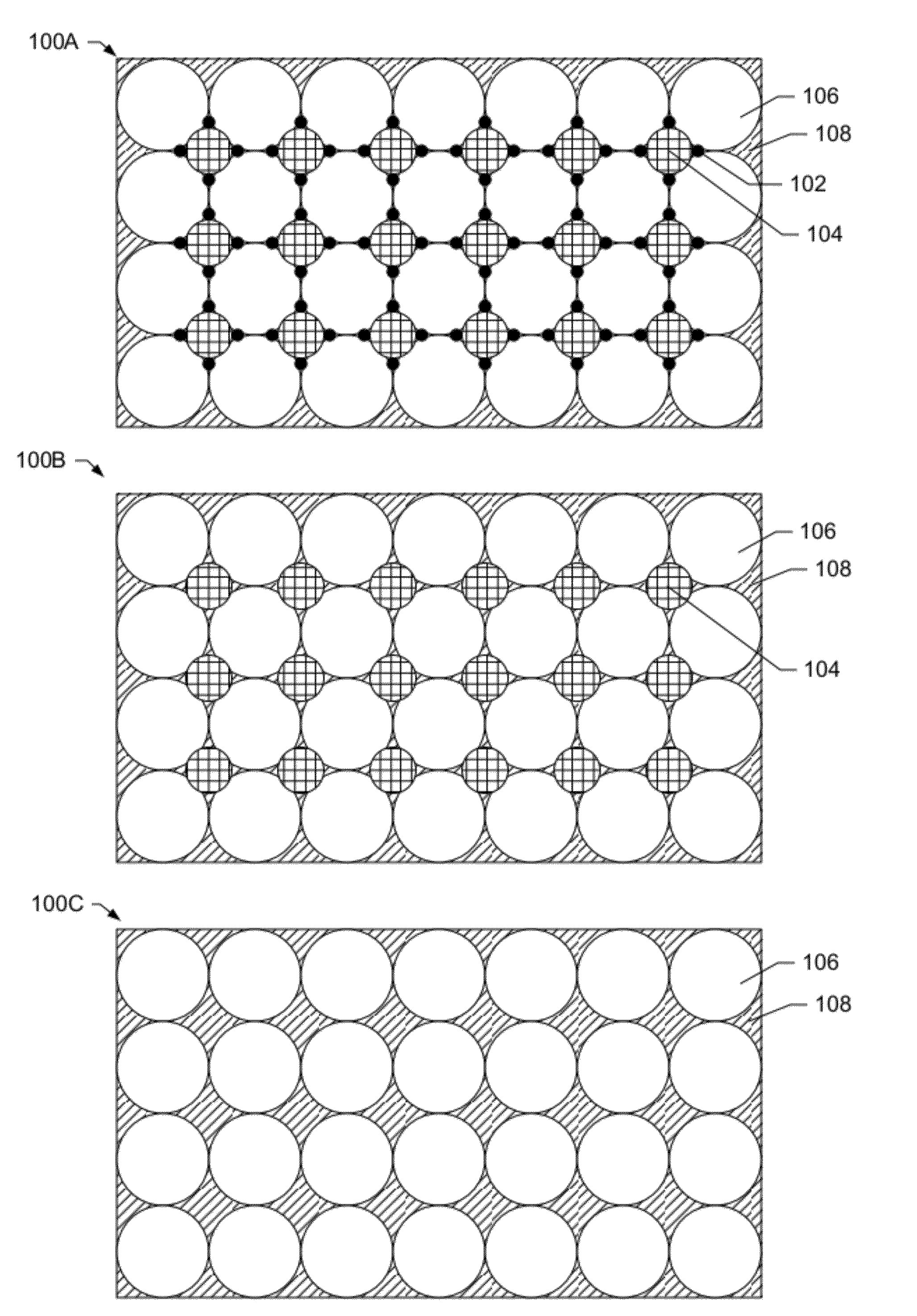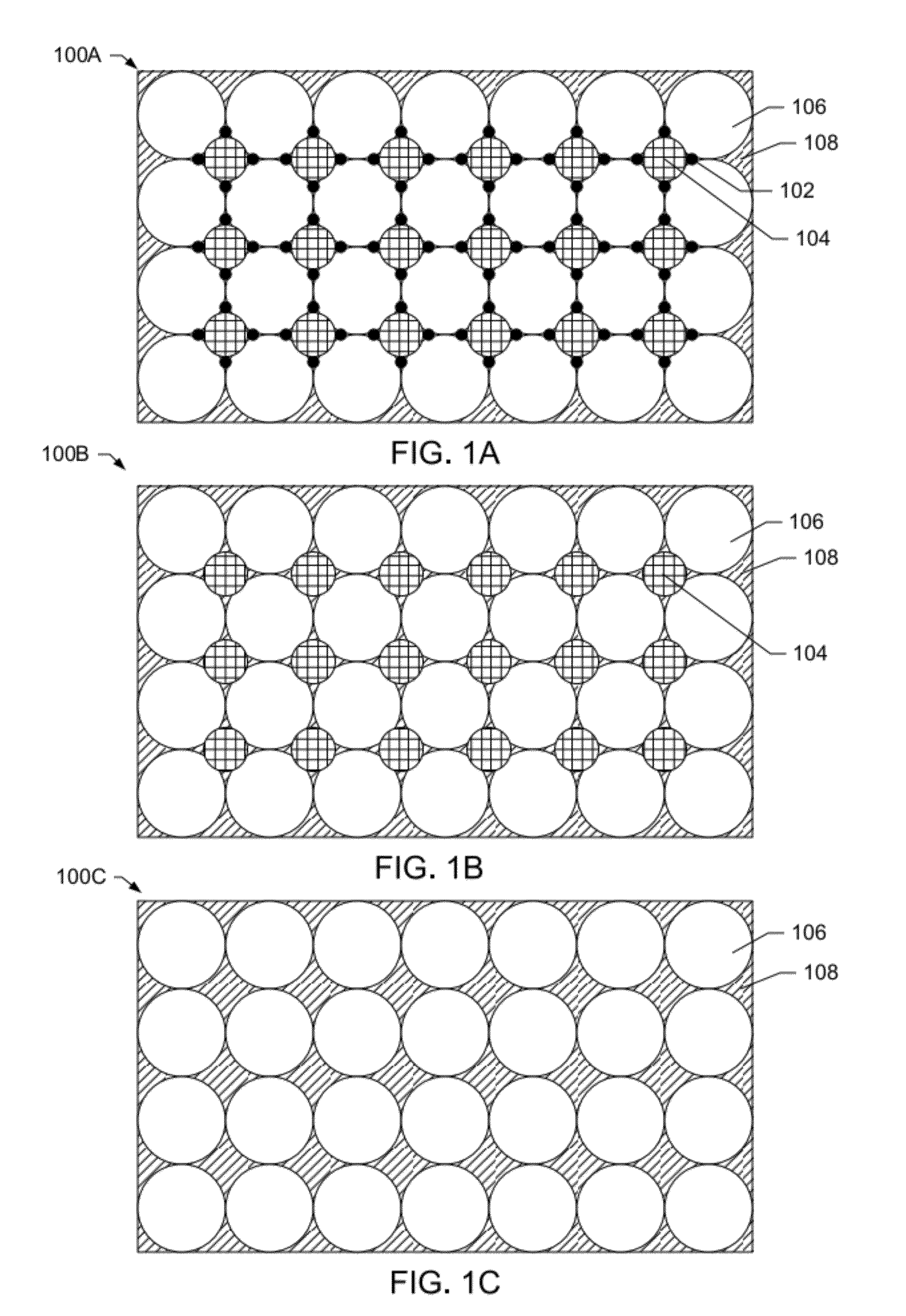High dielectric constant composite materials and methods of manufacture
a composite material, high dielectric constant technology, applied in the field of composite materials, can solve the problems of low dielectric strength limiting the application of high voltage, high power, or high energy storage systems, and reducing the dielectric constant of conventional ceramic materials, so as to achieve high dielectric constant and increase the dielectric strength of composite materials. , the effect of high dielectric constan
- Summary
- Abstract
- Description
- Claims
- Application Information
AI Technical Summary
Benefits of technology
Problems solved by technology
Method used
Image
Examples
example 1
[0081]By way of example and not limitation, an exemplary method used to prepare the high dielectric constant composite material with a verified dielectric constant of between about 75-140 at frequencies ranging between 200 MHz and 4.5 GHz is provided. Initially, approximately 250 ml of water and 250 ml of triethoxyvinylsilane were poured into an open beaker in a fume hood. The liquids were mixed with a magnetic stirrer at a temperature just below the boiling point of the mixture. The mixture was removed from the heat source and stirring was suspended when the mixture became miscible.
[0082]The solution was cooled to room temperature for immediate use. Alternately, the solution may be chilled for long-term storage. While the solution was cooling to room temperature, a mixture of ceramic powder was prepared. The mixture was composed of 65 wt % BaTiO3 particles with diameters between 65 μm and 150 μm, 25 wt % BaTiO3 particles with diameters between 0.5 μm and 3 μm, and 10 wt % BaTiO3 an...
example 2
[0086]By way of example and not limitation, another exemplary method is provided for producing a composite material with a dielectric constant between 400 and 600 at frequencies between 200 MHz and 4.5 GHz. Initially, a mixture of perovskite ceramic particles was prepared. The mixture was composed of 72 wt % BaTiO3 particles with diameters between 65 μm and 150 μm, 21 wt % BaTiO3 particles with diameters between 0.5 μm and 3 μm, and 7 wt % BaTiO3 and BST particles with diameters less than 100 nm. The ceramic powder was mixed with a mixer mill for approximately two minutes. Caution was exercised to avoid excessive mixing that could have resulted in milling the larger particles down to smaller sizes.
[0087]Agar, primarily as agarose, was used as the polymer binder. While, stirring, the agar was heated and melted at a high concentration in water. While heated, the agar and water solution was slowly added to and mixed with the ceramic particles in a pre-heated container. The mixture was ...
PUM
| Property | Measurement | Unit |
|---|---|---|
| Length | aaaaa | aaaaa |
| Length | aaaaa | aaaaa |
| Length | aaaaa | aaaaa |
Abstract
Description
Claims
Application Information
 Login to View More
Login to View More - R&D
- Intellectual Property
- Life Sciences
- Materials
- Tech Scout
- Unparalleled Data Quality
- Higher Quality Content
- 60% Fewer Hallucinations
Browse by: Latest US Patents, China's latest patents, Technical Efficacy Thesaurus, Application Domain, Technology Topic, Popular Technical Reports.
© 2025 PatSnap. All rights reserved.Legal|Privacy policy|Modern Slavery Act Transparency Statement|Sitemap|About US| Contact US: help@patsnap.com



